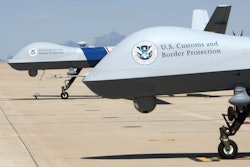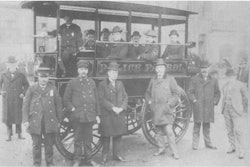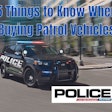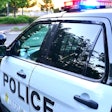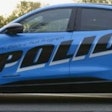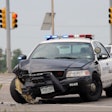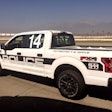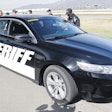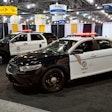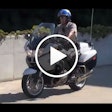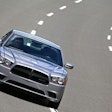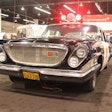In attempting to defy the laws of physics, as well as those they enforce, officers often end up paying the ultimate price.
Looming over the north side of California's state Route 91 near the Interstate 710 interchange is a billboard that cautions rush-hour motorists not to drive like they do in the movies. It even has the silhouette of a car canted at a 45-degree angle whose roof will doubtlessly collide with some telephone pole and be sheared off like some sardine can.
Cops would be well advised to take such messages to heart. Unfortunately, many don't.
Sometimes I wonder if some of our brethren aren't hell bent on replicating the feats of their cinematic peers. Certainly, the most famous car chases in movies have always involved cops. "The French Connection." "Bullitt." "The Seven Ups." How terrible the temptation must be to measure up to Steve McQueen (who, ironically, over-drove himself, resulting in the destruction of one of the production cameras and one of the more memorable scenes in "Bullitt").
In recent years, C.G.I.-enhanced fare has raised the bar still higher for audiences—with cars routinely doing barrel rolls and skidding 180 degrees to hijack oil tankers with ease—already weaned on fast lyrics ("I Can't Drive 55") and fast dialogue ("I feel the need, the need for speed"). It's small wonder that we have so many badged NASCAR wanna-bes out on the roads.
To be sure, it's not just the romantic notion of pushing the envelope and scaring the shit out of one's bookman that finds cops getting in over their heads; nothing so raises the adrenaline charge like a fellow officer's radioed cry for help. That so many cops end up over-driving and crashing long before they get to that call for help is what makes for a briefing-room caveat.
I used to think that it was only the young guns—the one's whose prefrontal cortexes hadn't fully developed—that were standing fearlessly with both feet on the accelerator.
But then I'd see the age of the decedent and the number of children that they'd left behind and realized that it was something else at work.
Unfortunately, driving can be dangerous in and of itself. One needn't act irresponsibly to get killed. Trees fall suddenly. Deers dart through windshields with kamikaze abandon. A summer rain and resurrected oil on the pavement can prove fateful.
But while we may attend occasionally attend emergency driving courses, we seemingly place less emphasis on driving dangers than we do other aspects of officer survival. It always amazed me how many patrol deputies who would never allow their sidearm to be stripped from them were nonetheless responsible for bringing that "Days Without an Accident" tally back to zero.
Fender benders are one thing, but it's no secret that collisions are one of the deadliest factors of our profession.
From June 22 to 27, we lost seven law enforcement officers nationally—an average of one per day.
And guess what? Not one had been shot.
Every one had been killed in some vehicular mishap, be it a car running into them or the loss of control of their patrol unit.
When I worked patrol, I'd often notice the deputies who had pictures of their loved ones inside their lockers or affixed to their visor—reminders of why they did the work they did and why it was important to finish that work in one piece. Quite often, they were the more squared-away cops, the one's who went about their job conscientiously.
Those opting for pics of Budweiser girls or strippers—while no less beholden to the photographs' subjects—tended to equally variable in their work performance.
I ask that the next time you go into work take a second to look at a picture of your loved ones. Ask yourself if you're doing all you can to ensure your safe return to them at the end of your shift. Are you watching those four-way intersections? Are you keeping the reins on yourself, and not going beyond what you and your car are capable of? Are you keeping an ear out for those telltale signs of a runaway vehicle careening towards you at roadside?
If you feel that you are, then Godspeed with your journey. Or, better yet, just keep it within your own speed.








